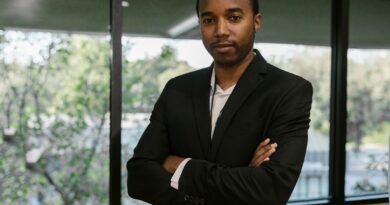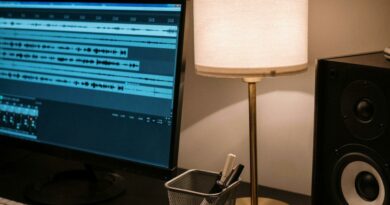7 Ways Disney Is Using AI [Case Study][2025]
At the intersection of creativity and cutting-edge technology, Disney continues to lead the entertainment industry into the future. Artificial intelligence (AI) is not just a tool for automation—it’s a catalyst for imagination, innovation, and immersive experiences. From enhancing animation and personalizing streaming to transforming theme park interactions and streamlining production pipelines, Disney is strategically deploying AI across its global ecosystem.
As part of DigitalDefynd’s ongoing exploration into how leading organizations harness AI, we take a deep dive into the Walt Disney Company’s real-world applications of artificial intelligence. These case studies highlight Disney’s unique ability to blend storytelling magic with smart technology—creating new benchmarks in efficiency, audience engagement, and creative expression.
Here are powerful ways Disney is using AI to inspire, innovate, and entertain.
7 Ways Disney Is Using AI [Case Study][2025]
1. AI-Powered Robotics: Bringing Characters to Life in Disney Parks
Challenge
Disney has long been at the forefront of creating immersive experiences in its theme parks. However, traditional animatronics, while impressive, have limitations in mobility and interactivity. To elevate guest engagement, Disney sought to develop more lifelike and responsive robotic characters that could interact seamlessly with visitors, enhancing the storytelling experience.
Solution
-
Collaboration with Tech Giants: Disney partnered with Nvidia and Google DeepMind to develop “Newton,” an advanced physics engine designed to simulate real-world robotic movement.
-
Introduction of BDX Droids: Utilizing Newton, Disney introduced Star Wars-inspired BDX droids equipped with AI capabilities. These droids can navigate complex environments, express emotions, and interact with guests in real-time.
-
Reinforcement Learning: The droids were trained using reinforcement learning techniques, allowing them to learn and adapt behaviors through simulated experiences before deployment in the parks.
Result
The deployment of AI-powered BDX droids has significantly enhanced guest experiences in Disney parks. Visitors can now engage with robotic characters that exhibit lifelike movements and interactions, blurring the lines between fiction and reality. This innovation not only showcases Disney’s commitment to cutting-edge technology but also sets a new standard for immersive entertainment in theme parks.
2. AI-Driven Advertising: Enhancing Marketing Efficiency
Challenge
In the competitive landscape of digital advertising, delivering personalized and effective marketing campaigns is crucial. Disney aimed to optimize its advertising strategies to reach target audiences more efficiently and enhance return on investment (ROI).
Solution
-
Disney Select AI Engine: At CES 2025, Disney unveiled the Disney Select AI Engine, a machine learning platform designed to analyze vast datasets and generate insights for targeted advertising.
-
Audience Segmentation and Lookalike Modeling: The AI engine segments audiences based on behavior and preferences, creating lookalike models to identify potential new customers with similar characteristics.
-
Sequential Retargeting: By understanding user journeys, the system implements sequential retargeting strategies, delivering tailored messages at optimal times to guide prospects through the conversion funnel.
Result
The integration of AI into Disney’s advertising operations has led to more precise targeting, improved customer engagement, and increased advertising efficiency. By leveraging AI-driven insights, Disney can craft compelling marketing narratives that resonate with individual consumers, thereby strengthening brand loyalty and driving business growth.
3. Enhancing Animation with AI-Driven Tools
Challenge
Disney has long been synonymous with groundbreaking animation, setting industry standards with classics like *Snow White and the Seven Dwarfs* and modern marvels like *Frozen*. However, as the demand for high-quality animated content continues to rise, Disney faces pressure to produce captivating visuals more efficiently while maintaining its hallmark quality. Though rich in creativity, traditional animation techniques often require significant manual effort and time. Complex processes such as character rigging, scene rendering, and frame-by-frame adjustments can stretch production timelines, making meeting tight deadlines for feature films, series, and short-form content difficult. Disney needed a solution to streamline animation production and provide animators with creative tools to elevate their craft without compromising quality or artistic vision.
Solution
a. AI-Assisted Animation Techniques: Disney implemented AI tools to automate repetitive animation tasks, such as in-betweening (creating intermediate frames between keyframes) and facial animation. By training AI models on large datasets of previously animated content, these tools can generate seamless transitions, reducing the manual workload on animators.
b. Advanced Rendering Capabilities: AI-driven rendering engines analyze lighting, textures, and movement to optimize scene quality while reducing rendering times. For instance, AI tools help simulate realistic water dynamics, hair movement, or fabric textures that traditionally required countless hours of manual adjustments. It has been particularly impactful in films like *Moana*, where natural elements play a pivotal role in storytelling.
c. Character Rigging Automation: Rigging, a process that involves creating a digital skeleton for characters, has historically been a time-intensive task. Disney’s AI tools simplify rigging by predicting bone structures and automating joint placements based on the character’s design. It speeds up character creation and allows animators to bring more complex, lifelike movements to the screen.
d. AI-Enhanced Motion Capture: Disney integrates AI with motion capture technology to create hyper-realistic character animations. AI algorithms process motion capture data to clean and refine movements, making applying these movements to animated characters easier. It is especially valuable for films requiring intricate choreography, such as *Raya and the Last Dragon*.
e. Style Transfer for Consistent Visuals: One of Disney’s innovative applications of AI is style transfer, where AI tools ensure consistency in visual aesthetics across frames. By analyzing the art style of a given sequence, AI can adjust colors, textures, and lighting to match the desired look.
Result
Disney’s adoption of AI-driven animation tools has transformed its creative processes. Automating labor-intensive tasks allows animators more time to focus on storytelling and artistic innovation. AI-enhanced tools have significantly reduced production times, enabling Disney to release high-quality animated content faster. The advanced rendering capabilities have led to visually stunning films and series, blending photorealistic elements with Disney’s trademark whimsical artistry. Character rigging automation and motion capture refinements have enhanced the fluidity of character movements, elevating the emotional impact of Disney’s storytelling. Films like *Encanto* and *Frozen 2* exemplify how AI tools contribute to richer, more immersive cinematic experiences.
Related: Ways American Express Uses AI
4. Personalized Streaming Recommendations on Disney+
Challenge
With the launch of Disney+, Disney entered the competitive streaming industry, dominated by platforms that deliver highly personalized content recommendations to engage viewers. Disney’s challenge was leveraging its extensive catalog of beloved classics, blockbusters, and original series while ensuring a personalized viewing experience that could rival or exceed the performance of established streaming platforms.
The key hurdles included understanding diverse audience preferences, handling vast amounts of streaming data, and ensuring recommendations felt tailored yet non-intrusive. Disney also balanced nostalgia-driven suggestions with promoting newer content to engage multiple generations of viewers. It required a sophisticated system capable of analyzing user behavior and providing relevant, engaging recommendations in real-time.
Solution
a. AI-Powered Recommendation Algorithms: Disney+ employs AI algorithms that analyze user behavior, such as viewing history, search patterns, and watchlist additions. These algorithms use machine learning models to identify patterns and predict user preferences. For instance, if a viewer frequently watches Marvel movies, the system might suggest related content like Marvel-themed animated series or behind-the-scenes documentaries.
b. Collaborative Filtering: Disney utilizes collaborative filtering, a method that compares users’ preferences with others with similar viewing habits. It enables the recommendation system to suggest content users with similar tastes have enjoyed, fostering a sense of discovery for less mainstream titles in Disney’s catalog.
c. Content Tagging with Natural Language Processing (NLP): AI-driven natural language processing (NLP) tags and categorizes Disney’s extensive content library. Each title is analyzed for genre, themes, characters, and tone. This granular tagging allows the recommendation system to provide highly specific suggestions, such as recommending animated musicals with empowering themes for users who enjoy films like *Frozen* or *Encanto*.
d. Dynamic User Profiles: AI dynamically adjusts user profiles based on changing preferences. For instance, if a user who primarily watches Pixar films suddenly starts streaming National Geographic documentaries, the recommendation engine adapts to promote similar educational content without abandoning the user’s historical preferences.
e. Parental Controls and Kid-Friendly AI: To cater to Disney+’s family-oriented audience, the platform incorporates AI tools that tailor recommendations for children while ensuring compliance with parental controls.
f. A/B Testing with AI: Disney+ continuously improves its recommendation system by using AI to conduct A/B tests. These tests measure how changes to recommendation algorithms impact user engagement. For example, AI evaluates whether emphasizing popular titles or promoting niche content leads to higher watch times, refining the system to maximize viewer satisfaction.
Result
Implementing AI-powered personalized recommendations has been instrumental in Disney+’s rapid success in the streaming industry. Users report a more engaging browsing experience, often discovering hidden gems in Disney’s vast library thanks to the intelligent suggestion system. AI’s ability to adapt dynamically has allowed Disney+ to cater to diverse audience segments, from Marvel fans to documentary enthusiasts to families with young children. Collaborative filtering and advanced tagging ensure that recommendations feel relevant and intuitive, encouraging longer watch times and increased platform loyalty. Additionally, Disney+ has successfully used AI to balance nostalgia with modern content.
Related: Ways IKEA Uses AI [Case Studies]
5. AI-Powered Guest Experiences in Disney Parks
Challenge
Disney Parks are globally renowned for creating magical and immersive experiences for guests of all ages. However, managing the operations of theme parks that host millions of visitors annually is no small feat. The challenge for Disney was to enhance guest satisfaction while addressing logistical hurdles like long wait times, crowd management, and personalized experiences in real time. Traditional methods of guest management relied heavily on manual scheduling, static maps, and pre-set operational workflows. As visitor numbers increased, it became apparent that these approaches were not scalable or sufficient to provide the seamless, enchanted experience Disney promised. The need for real-time insights into guest behavior, efficient resource allocation, and personalized engagement required a transformative approach.
Solution
a. Real-Time Crowd Management: Disney employs AI-driven analytics to monitor crowd flow and predict peak traffic areas in real-time. AI systems provide insights into where congestion might occur by analyzing data from sensors, cameras, and mobile apps. Park operations teams use this information to optimize crowd dispersion by opening alternate routes, deploying additional staff to high-traffic areas, or dynamically adjusting parade timings to prevent bottlenecks.
b. Virtual Queueing and Lightning Lane Integration: To tackle the issue of long wait times, Disney introduced AI-powered virtual queueing systems. Guests can reserve access to popular attractions through mobile apps, significantly reducing the time spent in physical lines. AI algorithms dynamically allocate queue slots based on factors like ride demand, guest proximity, and park attendance, ensuring a more equitable and efficient system. Lightning Lane passes, enabled by similar AI systems, allow guests to customize their park experience further.
c. Personalized Recommendations with the My Disney Experience App: Disney’s My Disney Experience app leverages AI to provide personalized suggestions based on guest preferences. For instance, if a family with young children shows interest in character meet-and-greets, the app might recommend nearby events featuring characters like Mickey Mouse or Elsa from *Frozen*. Similarly, guests interested in thrill rides might receive suggestions for attractions like *Space Mountain* or *Guardians of the Galaxy: Cosmic Rewind*.
d. AI-Enhanced Navigation with Genie+: The Genie+ service uses AI to offer optimized itineraries tailored to each guest’s interests and schedules. By analyzing real-time data on ride wait times, show schedules, and dining reservations, Genie+ recommends the most efficient route for guests to maximize their park experience. For example, it might suggest visiting a nearby ride with a shorter wait time before heading to a scheduled dining reservation.
e. Automated Food and Beverage Ordering: AI powers mobile food ordering within Disney Parks, allowing guests to skip the line at restaurants. AI analyzes order patterns and kitchen capacity and ensures accurate wait time predictions and efficient order fulfillment. Guests can customize their meals through the app, and AI systems prioritize preparation based on real-time demand, reducing delays during peak dining hours.
f. Language Translation for International Guests: AI-powered translation tools are integrated into mobile apps and kiosks to cater to Disney’s global audience. Guests can access park information, menus, and navigation assistance in their preferred language, ensuring a seamless experience for international visitors.
Result
AI-powered solutions have transformed the Disney Parks experience, delivering operational efficiency and magical personalization. Real-time crowd management tools have minimized congestion, allowing guests to navigate parks more comfortably and reducing wait times for popular attractions. Virtual queueing and Lightning Lane systems have enhanced guest satisfaction by streamlining access to rides and events. The My Disney Experience app and Genie+ have empowered guests to tailor their park visits, making every trip unique and memorable. By providing intelligent recommendations and dynamic itineraries, these AI tools have allowed visitors to focus on enjoying the magic rather than planning logistics. Backed by AI, food and beverage ordering systems have improved efficiency and reduced peak-hour wait times, enhancing the overall dining experience.
Related: Ways Honda Uses Artificial Intelligence
6. Streamlining Production with Virtual Assistants and AI
Challenge
The production process for Disney’s films and television shows involves intricate coordination across multiple departments, including scriptwriting, set design, special effects, and post-production editing. The scale and complexity of Disney’s operations require meticulous planning and execution to ensure quality while meeting tight deadlines and budgets. However, traditional production methods often relied on manual processes, leaving room for inefficiencies. Tasks like organizing schedules, tracking resource allocation, and managing team communication were time-intensive and prone to delays. A more efficient and cohesive production process became critical as Disney expanded its content portfolio with ambitious projects spanning live-action, animation, and streaming platforms.
Solution
a. AI-Powered Pre-Production Planning: Disney uses AI tools to analyze scripts and generate detailed breakdowns, identifying specific resource needs like locations, props, and set designs. These tools evaluate potential shooting schedules, calculate costs, and recommend optimal workflows based on prior production data. It enables producers and directors to plan efficiently, reducing the likelihood of bottlenecks during the production phase.
b. Virtual Assistants for Task Management: Disney integrates AI-driven virtual assistants into its production management systems to automate repetitive tasks and improve team coordination. These virtual assistants handle tasks like scheduling meetings, sending reminders, and updating project timelines in real-time. By reducing the administrative burden on production teams, these tools free up time for creative decision-making.
c. Enhanced Collaboration Tools: AI-based collaboration platforms allow teams across departments and locations to work seamlessly. For example, animators, special effects artists, and editors can upload and share assets in a central system. AI algorithms organize these files, ensuring the most recent versions are accessible while maintaining detailed revision histories. It streamlines the creative process and prevents miscommunication.
d. AI for Special Effects and CGI Optimization: In projects requiring extensive visual effects (VFX), Disney employs AI to generate and refine computer-generated imagery (CGI). AI tools can render realistic simulations for environments, lighting, and character animations, reducing the manual workload on VFX artists. For instance, AI can simulate realistic physics for explosions or water effects, allowing artists to focus on refining the final visuals rather than creating them from scratch.
e. Automated Resource Allocation: AI systems analyze project requirements and allocate resources, such as studio space, equipment, and personnel, in real-time. By monitoring progress and adjusting allocations dynamically, AI ensures that production remains on schedule and within budget. It is particularly valuable for large-scale productions involving multiple concurrent projects, as it prevents resource conflicts and optimizes utilization.
f. Real-Time Problem Detection and Resolution: AI tools monitor ongoing production activities and identify potential issues before they escalate. For instance, predictive analytics can detect scheduling conflicts, equipment malfunctions, or budget overruns early, enabling teams to take corrective action proactively. It reduces downtime and helps maintain smooth production workflows.
Result
Integrating AI and virtual assistants into Disney’s production processes has significantly improved efficiency and collaboration. Pre-production planning tools have streamlined the initial stages of project development, ensuring that resources are allocated effectively and timelines are realistic. Virtual assistants have reduced administrative workloads, allowing production teams to focus on creative and strategic priorities. Collaboration platforms powered by AI have enhanced communication across departments, minimizing delays caused by miscommunication or version control issues.
AI’s contributions to special effects and CGI have elevated the quality of Disney’s visual storytelling while reducing production timelines. Disney’s VFX teams can deliver stunning visuals without compromising creativity or precision by automating complex simulations and repetitive tasks. Automated resource allocation and real-time problem detection systems have improved cost management and kept projects on track, even under tight schedules.
Related: Ways Nike Uses AI [Case Studies]
7. AI in Content Localization and Voiceover Synchronization
Challenge
As a global entertainment powerhouse, Disney serves a diverse audience spanning numerous countries and languages. Delivering its content in a way that resonates with audiences worldwide requires seamless localization, including translation, dubbing, and cultural adaptation. However, the traditional localization process is labor-intensive, involving manual translation, voiceover recording, and lip-syncing, and often delays the release of localized versions.
Moreover, ensuring consistency in character voices, tone, and cultural nuance across languages is a significant challenge, especially for beloved characters like Elsa, Simba, or Iron Man. Achieving this level of precision while scaling localization efforts for Disney’s vast content library, including animated films, live-action movies, and streaming series, required a transformative solution.
Solution
a. AI-Powered Translation Tools: Disney leverages advanced AI algorithms to translate scripts into multiple languages while maintaining the original meaning, tone, and cultural context. These tools are trained on vast datasets of prior translations and linguistic rules, enabling them to adapt to Disney’s unique storytelling style. For instance, AI ensures that iconic phrases or character-specific dialogue remains impactful across different languages without losing its essence.
b. Voice Cloning and AI-Generated Dubbing: Disney uses AI-based voice synthesis technology to create voiceovers that match the original character’s tone, pitch, and emotional expression. Voice cloning tools analyze the original voice actor’s performance and replicate it in other languages, providing a consistent auditory experience for global audiences. It is particularly useful for animated films, where character voices are integral to their personalities.
c. Lip-Sync Automation: AI tools automate the lip-syncing dubbed dialogue with the on-screen character’s mouth movements. These algorithms analyze the timing and shape of lip movements in the original footage and adjust the dubbed audio accordingly. It ensures a seamless viewing experience, where the localized dialogue feels natural and synchronized.
d. Cultural Adaptation with AI: AI tools analyze cultural nuances to adapt content for specific regions. For example, jokes, idioms, or culturally specific references that may not translate well are replaced with equivalent expressions that resonate with the target audience. This cultural sensitivity ensures that Disney’s storytelling remains engaging and relevant worldwide.
e. Streamlined Workflow Integration: Disney integrates AI into its localization pipeline to automate repetitive tasks like text formatting, subtitle synchronization, and file management. It allows creative teams to focus on refining translations and voiceovers while AI handles operational efficiencies. The result is a faster, more scalable localization process that meets tight release schedules.
Result
Integrating AI into Disney’s content localization processes has significantly improved efficiency, quality, and scalability. AI-powered translation tools have enhanced translated scripts’ accuracy and cultural relevance, ensuring that Disney’s storytelling resonates with audiences across languages and regions. Voice cloning and AI-generated dubbing have provided consistent, high-quality character voices, preserving the emotional depth and authenticity of the original performances. It has been particularly impactful for animated films like *Frozen* and *Moana*, where character voices are a cornerstone of the viewing experience.
AI-driven lip-sync automation has eliminated the visual disconnect often associated with poorly synchronized dubbing. By aligning dubbed dialogue with character lip movements, Disney has delivered a more immersive viewing experience, reinforcing its commitment to excellence. Using cultural adaptation tools has allowed Disney to localize content without losing its charm or humor, fostering deeper connections with global audiences. Streamlined workflows powered by AI have reduced localization timelines, enabling Disney to simultaneously release multilingual versions of its content worldwide.
Related: Ways IBM Uses AI
Conclusion
Disney’s strategic adoption of AI demonstrates its commitment to innovation and excellence in the entertainment industry. These case studies reveal how the company uses AI to solve challenges, from automating complex animation tasks to personalizing streaming experiences and transforming guest interactions in theme parks. AI has also enabled Disney to streamline its production workflows and achieve seamless content localization, making its stories accessible and relatable to diverse global audiences. These advancements are more than technological upgrades—they enhance creativity, efficiency, and audience satisfaction, ensuring Disney remains a cultural and entertainment icon. As Disney continues to integrate AI across its operations, it redefines storytelling and experience delivery, inspiring other industries to explore the transformative potential of AI.





